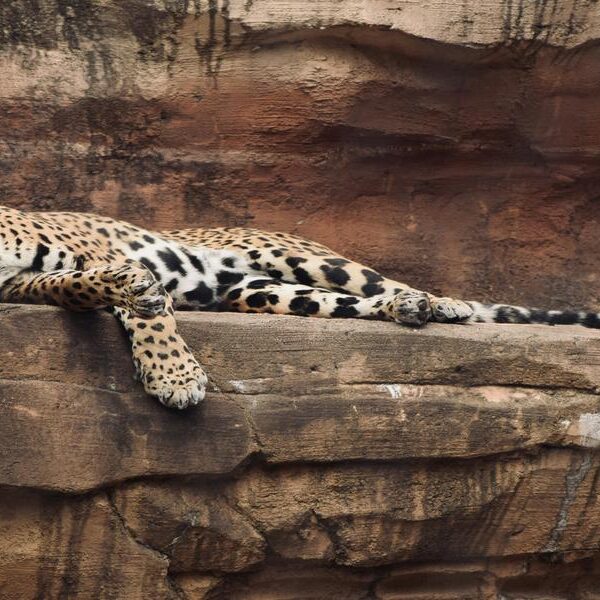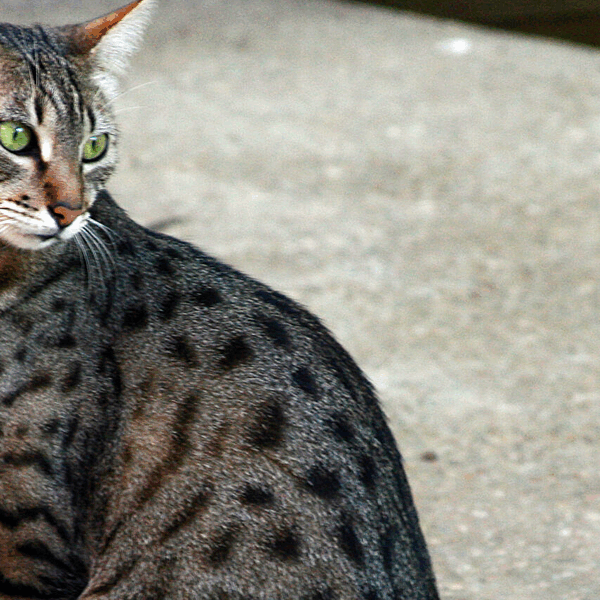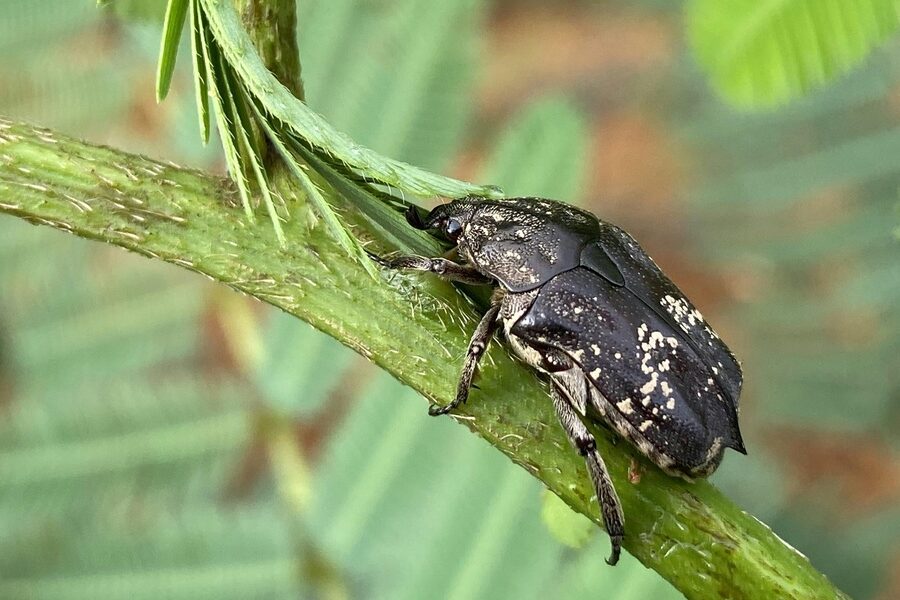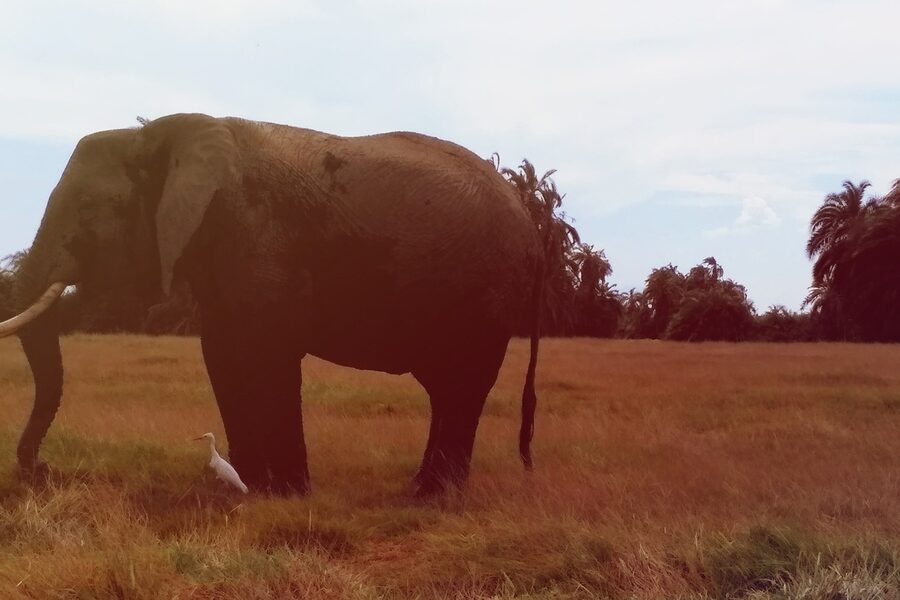Rainforests are home to a diverse group of secondary consumers—predators that feed on primary consumers like herbivores and insects. This list includes 45 fascinating animals found across various rainforest layers, from forest floors to the canopy. Many of these creatures, such as the Amazonian Giant Centipede and the White-nosed Coati, play key roles in controlling populations and maintaining the delicate balance of the ecosystem. Most secondary consumers have specialized diets and habitats that help define their place in the rainforest’s food web.
Explore the detailed list below to learn about each animal’s scientific name, typical diet, and habitat layer, helping you understand their important ecological roles.
What Are Rainforest Secondary Consumers?
Secondary consumers are animals that eat primary consumers—organisms that feed directly on plants. In rainforests, these include many carnivores and omnivores such as snakes, birds, mammals, and large insects. They help control populations of herbivores and insects, which keeps the ecosystem balanced. Knowing their typical diet and habitat layer shows how they fit into the rainforest food web and why they are essential for a healthy environment.
How Are Rainforest Secondary Consumers Classified?
Rainforest secondary consumers can be grouped by their animal type (like reptiles, mammals, or birds) or by the layer of the forest they usually live in—such as the forest floor, understory, canopy, or emergent layer. This classification helps explain their hunting techniques and prey choices. For example, canopy dwellers like the Harpy Eagle hunt arboreal mammals, while forest floor predators like the Fer-de-Lance target rodents and frogs. Understanding these categories makes it easier to see how different species rely on one another for survival.
Rainforest Secondary Consumers
| Animal Name | Scientific Name | Typical Diet | Habitat Layer |
|---|---|---|---|
| Ocelot | Leopardus pardalis | Small mammals, birds, reptiles | Forest floor, understory |
| Margay | Leopardus wiedii | Small mammals, birds, lizards, tree frogs | Canopy, understory |
| Jaguarundi | Herpailurus yagouaroundi | Rodents, birds, rabbits, reptiles | Understory, forest floor |
| Oncilla | Leopardus tigrinus | Small rodents, birds, lizards | Understory, forest floor |
| Tayra | Eira barbara | Small mammals, birds, insects, lizards | Understory, canopy |
| Kinkajou | Potos flavus | Insects, frogs, eggs, nectar | Canopy |
| Nine-banded Armadillo | Dasypus novemcinctus | Insects, grubs, spiders, termites | Forest floor |
| Southern Tamandua | Tamandua tetradactyla | Ants, termites | Understory, forest floor |
| White-nosed Coati | Nasua narica | Insects, spiders, lizards, eggs | Forest floor, understory |
| Capuchin Monkey | Cebus capucinus | Insects, frogs, lizards, bird eggs | Canopy, understory |
| Tarsier | Carlito syrichta | Insects, spiders, lizards, small birds | Understory |
| Fringe-lipped Bat | Trachops cirrhosus | Frogs, lizards, large insects | Understory |
| Vampire Bat | Desmodus rotundus | Blood from mammals and birds | Understory, forest floor |
| Harpy Eagle | Harpia harpyja | Sloths, monkeys, large birds | Emergent, canopy |
| Bat Falcon | Falco rufigularis | Bats, birds, large insects | Canopy, emergent |
| Blue-crowned Motmot | Momotus momota | Large insects, spiders, lizards, frogs | Understory |
| Rufous-tailed Jacamar | Galbula ruficauda | Flying insects, butterflies, bees | Understory, forest edge |
| White-necked Puffbird | Notharchus hyperrhynchus | Insects, lizards, frogs | Canopy, understory |
| Spot-crowned Antvireo | Dysithamnus puncticeps | Insects, spiders, caterpillars | Understory |
| Keel-billed Toucan | Ramphastos sulfuratus | Insects, lizards, snakes, bird eggs | Canopy |
| Greater Roadrunner | Geococcyx californianus | Insects, lizards, snakes, rodents | Forest floor, scrubland |
| Ferruginous Pygmy Owl | Glaucidium brasilianum | Insects, small birds, lizards, rodents | Understory, canopy |
| Emerald Tree Boa | Corallus caninus | Small mammals, birds, lizards | Canopy, understory |
| Green Tree Python | Morelia viridis | Small mammals, reptiles | Canopy, understory |
| Fer-de-Lance | Bothrops atrox | Rodents, frogs, birds, lizards | Forest floor |
| Bushmaster | Lachesis muta | Rodents, birds | Forest floor |
| Caiman Lizard | Dracaena guianensis | Snails, crabs, insects | Forest floor, aquatic |
| Common Basilisk | Basiliscus basiliscus | Insects, spiders, fish, small vertebrates | Understory, aquatic |
| Tokay Gecko | Gekko gecko | Insects, spiders, small lizards, mice | Understory, human dwellings |
| Panther Chameleon | Furcifer pardalis | Insects, spiders | Understory, canopy |
| Red-Eyed Tree Frog | Agalychnis callidryas | Insects (moths, crickets, flies) | Understory |
| Poison Dart Frog | Dendrobatidae family | Ants, mites, termites | Forest floor |
| Glass Frog | Centrolenidae family | Small insects, spiders | Understory |
| Smoky Jungle Frog | Leptodactylus pentadactylus | Insects, frogs, snakes, small mammals | Forest floor |
| Caecilian | Gymnophiona order | Earthworms, termites, insects | Forest floor (subterranean) |
| Army Ant | Eciton burchellii | Insects, spiders, scorpions, small vertebrates | Forest floor |
| Praying Mantis | Mantodea order | Insects, spiders, lizards, frogs | Understory, canopy |
| Goliath Birdeater Tarantula | Theraphosa blondi | Insects, worms, frogs, lizards | Forest floor |
| Amazonian Giant Centipede | Scolopendra gigantea | Insects, spiders, lizards, frogs, bats | Forest floor, caves |
| Emperor Scorpion | Pandinus imperator | Insects, spiders, other scorpions | Forest floor |
| Dragonfly | Anisoptera order | Mosquitoes, flies, gnats, butterflies | Aerial (above canopy/water) |
| Wandering Spider | Phoneutria species | Insects, spiders, frogs, lizards | Forest floor, understory |
| Velvet Worm | Onychophora phylum | Small invertebrates (isopods, termites) | Forest floor (leaf litter) |
| Driver Ants | Dorylus species | Insects, worms, any animal that cannot escape | Forest floor |
| Red-bellied Piranha | Pygocentrus nattereri | Fish, insects, crustaceans, small vertebrates | Aquatic (rivers) |
Images and Details

Ocelot
This beautifully spotted wild cat is a stealthy nocturnal hunter. Its excellent vision and hearing make it a master of ambush, helping to control populations of rodents and other small animals on the forest floor, making it a key mid-level predator.
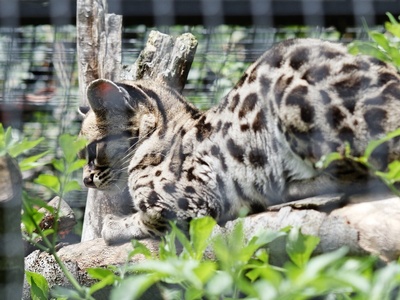
Margay
Often called the “tree ocelot,” the margay is a gifted climber with ankles that can rotate 180 degrees. It spends most of its life in the trees, hunting small arboreal animals and playing a vital role in the canopy’s food web.
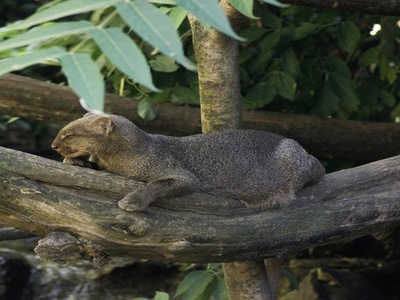
Jaguarundi
This slender, unmarked cat has a unique weasel-like appearance. A highly adaptable and secretive predator, it often hunts during the day, controlling populations of ground-dwelling animals in dense lowland brush and forests.
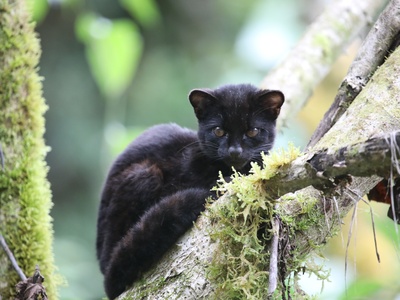
Oncilla
One of the smallest wild cats in the Americas, the oncilla, or “little spotted cat,” is a secretive and nocturnal hunter. Its diet of small vertebrates makes it an important, though rarely seen, predator in the cloud forest understory.
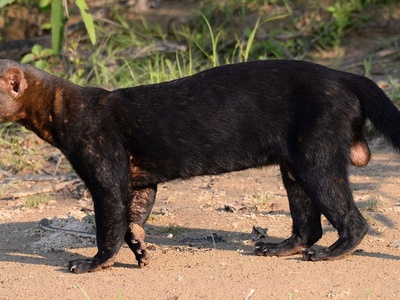
Tayra
A member of the weasel family, the tayra is an agile and opportunistic omnivore. It forages both on the ground and in trees, known for its intelligence and broad diet, which includes everything from rodents to fruits and honeycomb.
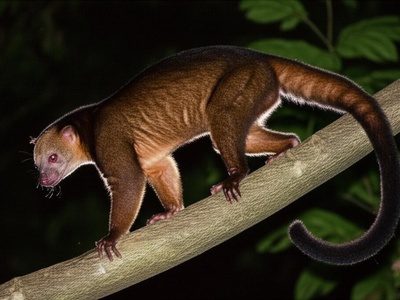
Kinkajou
While known for its love of fruit, the kinkajou is an important nocturnal omnivore that also avidly consumes insects, frogs, and bird eggs. Its prehensile tail helps it navigate the canopy at night in search of its varied meals.
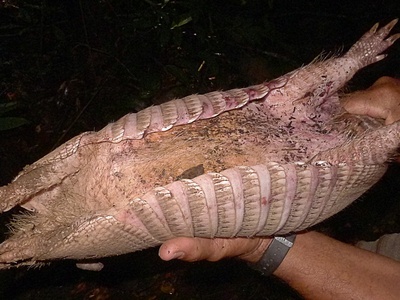
Nine-banded Armadillo
This armored mammal is a prolific digger, using its powerful claws and long snout to unearth insects and larvae. By constantly tilling the soil and consuming invertebrates, it acts as a crucial link in the forest floor’s food chain.
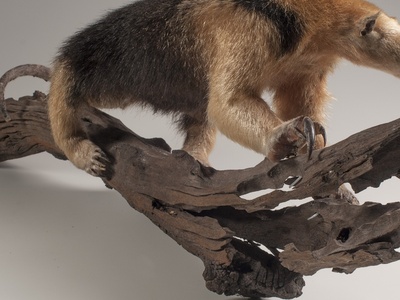
Southern Tamandua
This unique anteater, equipped with a prehensile tail and powerful claws, specializes in tearing open ant and termite nests. It’s a highly specialized secondary consumer, helping control insect colonies in the rainforest.
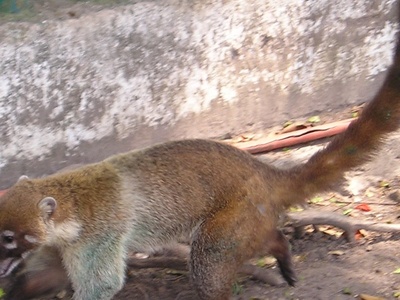
White-nosed Coati
Coatis are social and intelligent animals that use their long snouts to forage for invertebrates and small vertebrates in the leaf litter. Traveling in large bands, they are a significant predatory force on the forest floor.
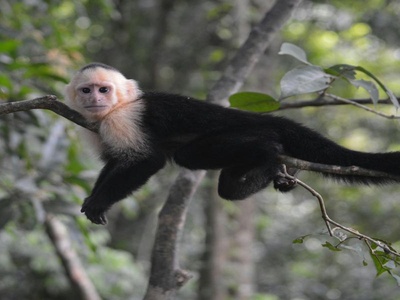
Capuchin Monkey
Highly intelligent and resourceful, capuchins are active omnivores. They spend much of their day foraging for insects, smashing nuts, and raiding nests, making them effective secondary consumers who impact both plant and animal life in the canopy.
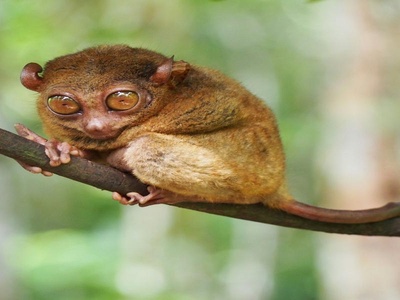
Tarsier
These tiny, nocturnal primates are the only purely carnivorous primates. With enormous eyes and the ability to turn their heads nearly 360 degrees, they are formidable ambush predators of insects and other small prey in the undergrowth of Southeast Asian rainforests.
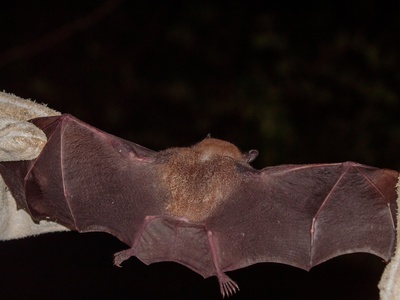
Fringe-lipped Bat
Also known as the “frog-eating bat,” this clever predator listens for the mating calls of frogs to locate its prey. It is a fascinating example of a specialized predator that uses sound to hunt other animals in the dark understory.
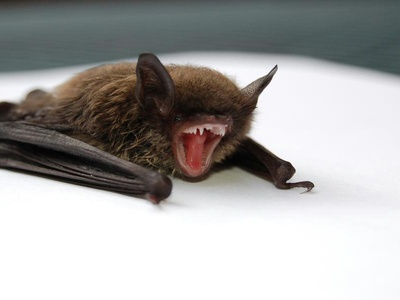
Vampire Bat
While infamous, the common vampire bat is a true secondary consumer, feeding on the blood of other animals (primary or secondary consumers). Its saliva contains an anticoagulant, a substance now studied for medical use in humans.

Harpy Eagle
One of the world’s most powerful eagles, the Harpy Eagle is an apex predator that functions as a secondary consumer. It hunts large arboreal mammals like sloths and monkeys, ruling the rainforest canopy with its massive talons and keen sight.
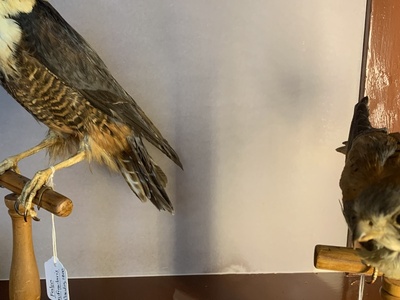
Bat Falcon
As its name suggests, this small, speedy falcon is a specialist hunter of bats at dusk and dawn. It also preys on swallows and insects, performing incredible aerial acrobatics to catch its prey on the wing near the top of the rainforest.
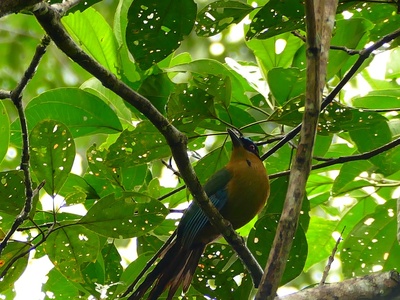
Blue-crowned Motmot
Known for its distinctive long tail with two racquet-like tips, the motmot is a “sit-and-wait” predator. It perches quietly in the understory before sallying out to snatch insects, spiders, and even small lizards a key insectivore of neotropical forests.
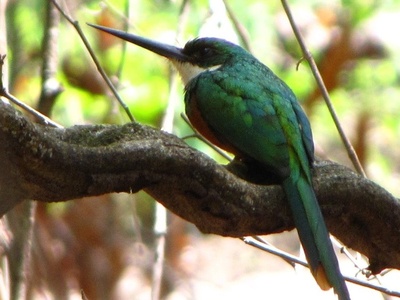
Rufous-tailed Jacamar
This brilliantly iridescent bird is an expert aerial hunter, often compared to a giant hummingbird. It perches on branches, darting out to catch large, colorful insects like butterflies and dragonflies in mid-air.
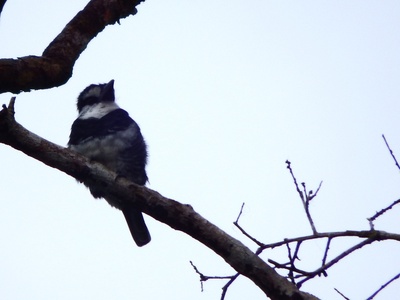
White-necked Puffbird
Puffbirds are patient predators, perching motionless for long periods before ambushing their prey. They eat large insects, spiders, and small vertebrates, often stunning them on a branch before swallowing them whole.
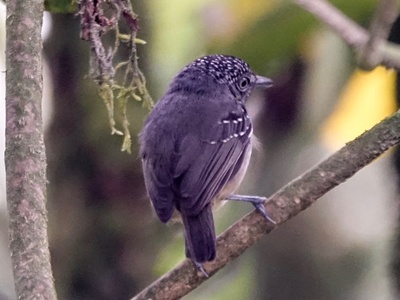
Spot-crowned Antvireo
This small bird is a classic “ant-follower.” It doesn’t eat the ants but follows swarms of army ants to capture the various insects and other small arthropods that are flushed out from the leaf litter by the marching ant columns.
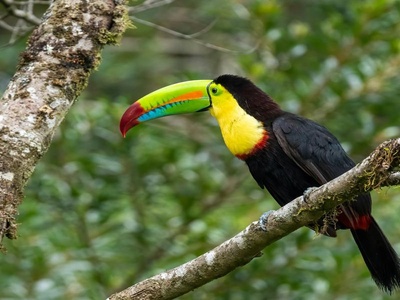
Keel-billed Toucan
While famous for eating fruit, the keel-billed toucan is a significant opportunistic predator. It uses its large, colorful bill to raid the nests of other birds for eggs and nestlings, and also eats insects and small reptiles.
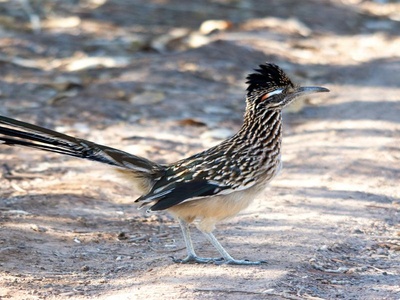
Greater Roadrunner
Adapted to drier forests, the roadrunner is a fast, ground-dwelling predator. It chases down a wide array of prey, including venomous snakes and scorpions, which it kills by bashing them against rocks before swallowing.
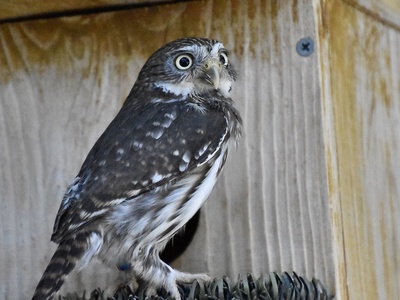
Ferruginous Pygmy Owl
This tiny but fierce owl often hunts during the day. Despite its size, it is a bold predator, preying on a variety of small animals, and its distinctive, tooting call is a common sound in many neotropical forests.
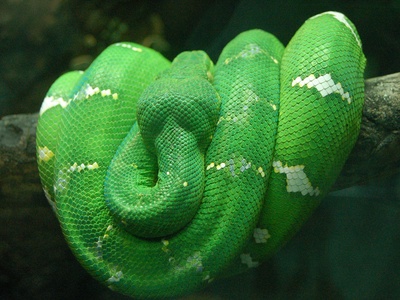
Emerald Tree Boa
This stunningly green snake is a nocturnal ambush predator. It uses its prehensile tail to anchor itself to branches, coiling its body and waiting for small mammals and other prey to pass within striking distance in the rainforest canopy.
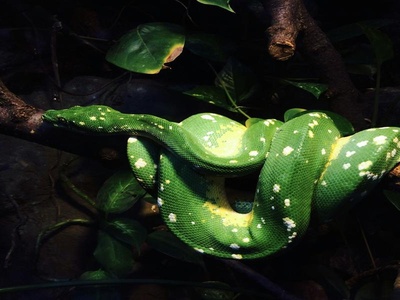
Green Tree Python
A vibrant green snake perfectly camouflaged in the rainforest canopy of New Guinea and Australia. It coils on branches, using its tail as a lure to attract small mammals and reptiles, which it then constrains with its powerful body.
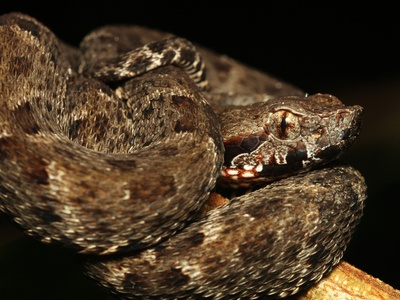
Fer-de-Lance
A highly venomous pit viper, the fer-de-lance is a formidable ground-dwelling predator in Central and South America. It uses its heat-sensing pits to locate warm-blooded prey like rodents at night, playing a crucial role in controlling their populations.
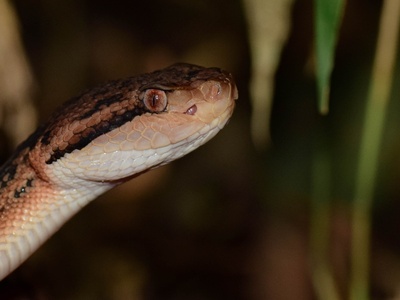
Bushmaster
The longest venomous snake in the Americas, the bushmaster is a rare and patient ambush predator. It can wait for weeks in one spot for a suitably sized rodent or bird to come within its impressive striking range on the forest floor.
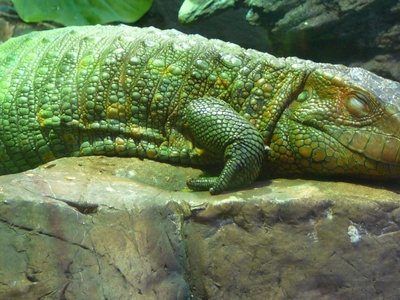
Caiman Lizard
This semi-aquatic lizard has powerful jaws and molar-like teeth specifically adapted for crushing the shells of snails, its primary food. It is a specialized consumer, patrolling waterways and forest floors for its hard-shelled prey.
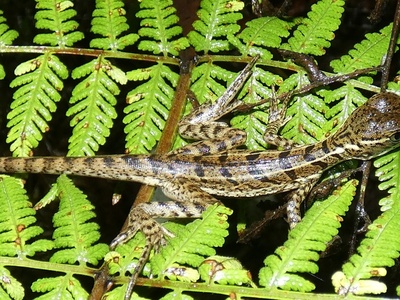
Common Basilisk
Famous for its ability to run across water, the basilisk is an agile omnivore with a strong preference for animal prey. It eats insects, spiders, and even small vertebrates, hunting along the rivers and streams of the rainforest.
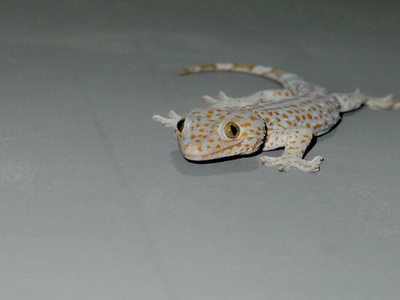
Tokay Gecko
A large and aggressive gecko with a powerful bite and distinctive call. It’s a voracious nocturnal predator of large insects, spiders, and even small vertebrates, making it a highly effective form of pest control in its native Southeast Asian habitats.
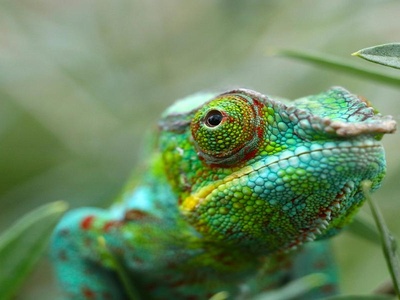
Panther Chameleon
A master of camouflage from Madagascar, the panther chameleon uses its incredible color-changing ability to blend in while hunting. Its long, sticky tongue can shoot out at high speed to catch insects from a distance.
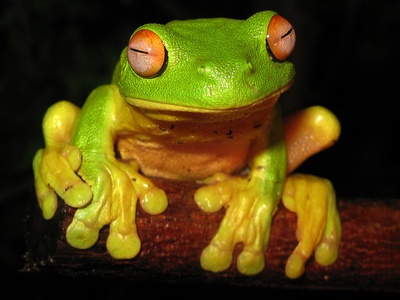
Red-Eyed Tree Frog
This iconic, brightly colored frog is a nocturnal insectivore. It hides under leaves during the day and emerges at night to hunt, using its excellent vision and sticky tongue to capture insects in the rainforest understory of Central America.

Poison Dart Frog
These tiny, vividly colored frogs get their toxicity from their diet of ants and mites. They are active daytime hunters on the forest floor, using their bright colors to warn potential predators of the potent poison they carry.
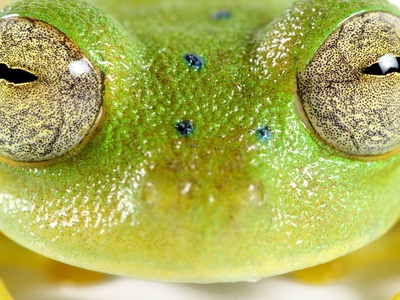
Glass Frog
Named for their translucent skin that reveals their internal organs, glass frogs are delicate nocturnal predators. They live on leaves overhanging streams, preying on small insects and spiders that share their leafy habitat.
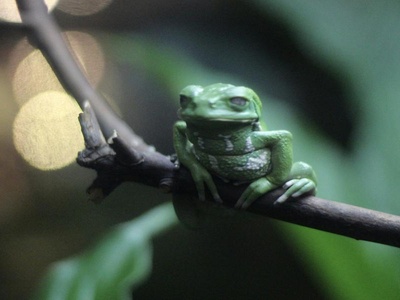
Smoky Jungle Frog
One of the largest frogs in the neotropics, this amphibian is a voracious and indiscriminate predator. It will attempt to eat almost any animal it can overpower and fit into its huge mouth, from large insects to other frogs and even snakes.
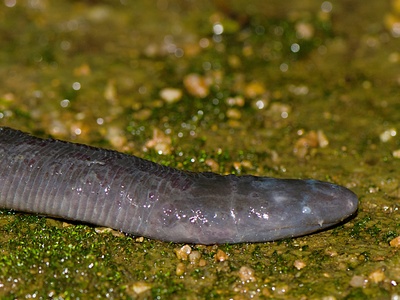
Caecilian
These legless, burrowing amphibians are seldom seen but are important predators below the leaf litter. Resembling giant earthworms, they use a keen sense of smell to hunt for worms, termites, and other invertebrates in the soil.
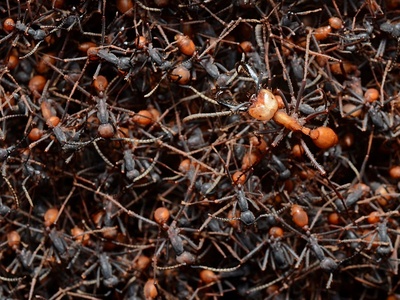
Army Ant
Army ants are not single predators but a collective superorganism. Their massive swarms sweep across the forest floor, consuming any insect, arachnid, or small animal unable to escape their path, making them one of the most dominant invertebrate predators.
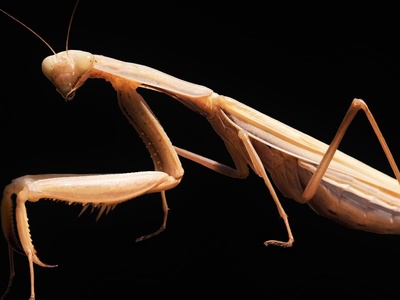
Praying Mantis
A master of disguise and a patient ambush predator, the praying mantis can snatch prey with lightning-fast reflexes. Its diet consists mainly of other insects and spiders, but larger species are capable of taking lizards and even small birds.

Goliath Birdeater Tarantula
The world’s largest spider by mass, this tarantula is a powerful ground-dwelling hunter. Despite its name, it rarely eats birds, preying instead on large insects, worms, and small amphibians and reptiles it finds in its burrow or on the forest floor.

Amazonian Giant Centipede
This enormous, venomous centipede is one of the rainforest’s most terrifying invertebrate predators. It actively hunts a huge variety of prey, even climbing into caves to catch bats, subduing them with its powerful venomous bite.
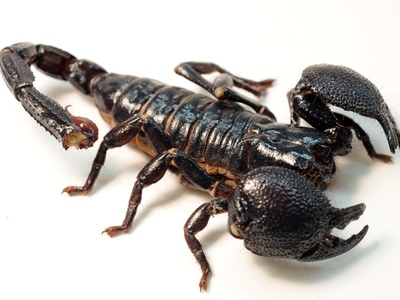
Emperor Scorpion
One of the largest scorpions in the world, the emperor scorpion is a nocturnal hunter from the forests of West Africa. It uses its large pincers to crush insects and other invertebrates, relying on its venomous stinger for defense rather than hunting.
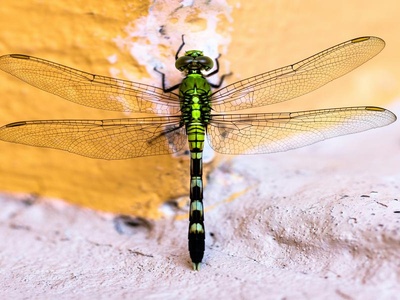
Dragonfly
Dragonflies are formidable aerial predators, catching a vast number of smaller flying insects with unparalleled agility. They are crucial for controlling populations of mosquitoes and other pests, patrolling wetlands and clearings in the rainforest.
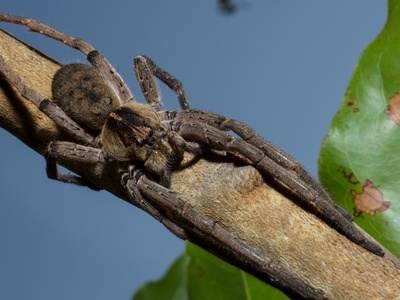
Wandering Spider
Known for their potent venom and aggressive defensive posture, these large spiders do not build webs but actively hunt on the forest floor at night. Their predatory behavior makes them significant controllers of insect and small vertebrate populations.
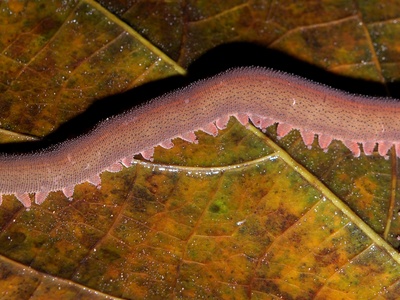
Velvet Worm
These ancient, caterpillar-like creatures are unique predators of the damp leaf litter. They ensnare their prey by shooting jets of a sticky, quick-hardening slime from glands on their head, immobilizing small invertebrates before consuming them.
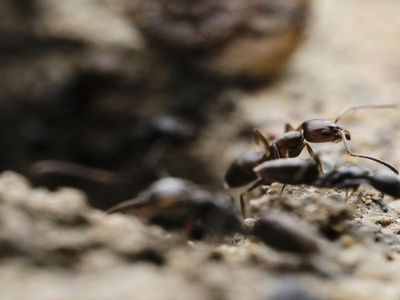
Driver Ants
The African equivalent of army ants, driver ants form massive columns that overwhelm any small creature in their path. Their powerful bite and sheer numbers make them a dominant force, capable of consuming vast quantities of invertebrates.
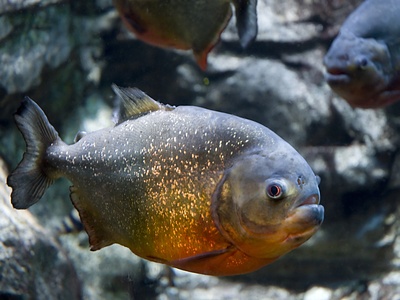
Red-bellied Piranha
Famous for their sharp teeth and feeding frenzies, piranhas are opportunistic carnivores. While they also scavenge, they actively hunt other fish, insects, and any small animal that falls into the water, playing a key role in riverine ecosystems.

